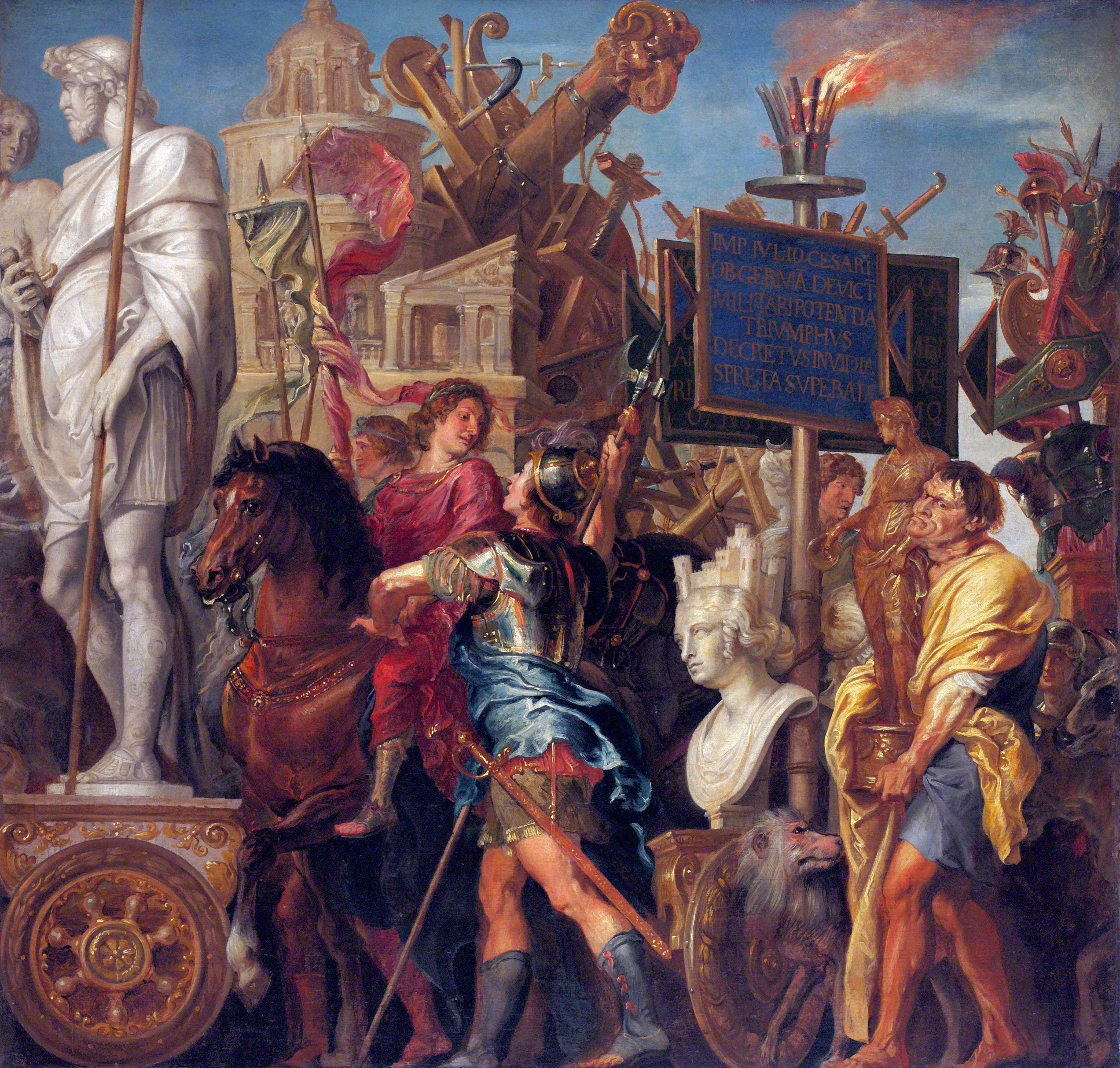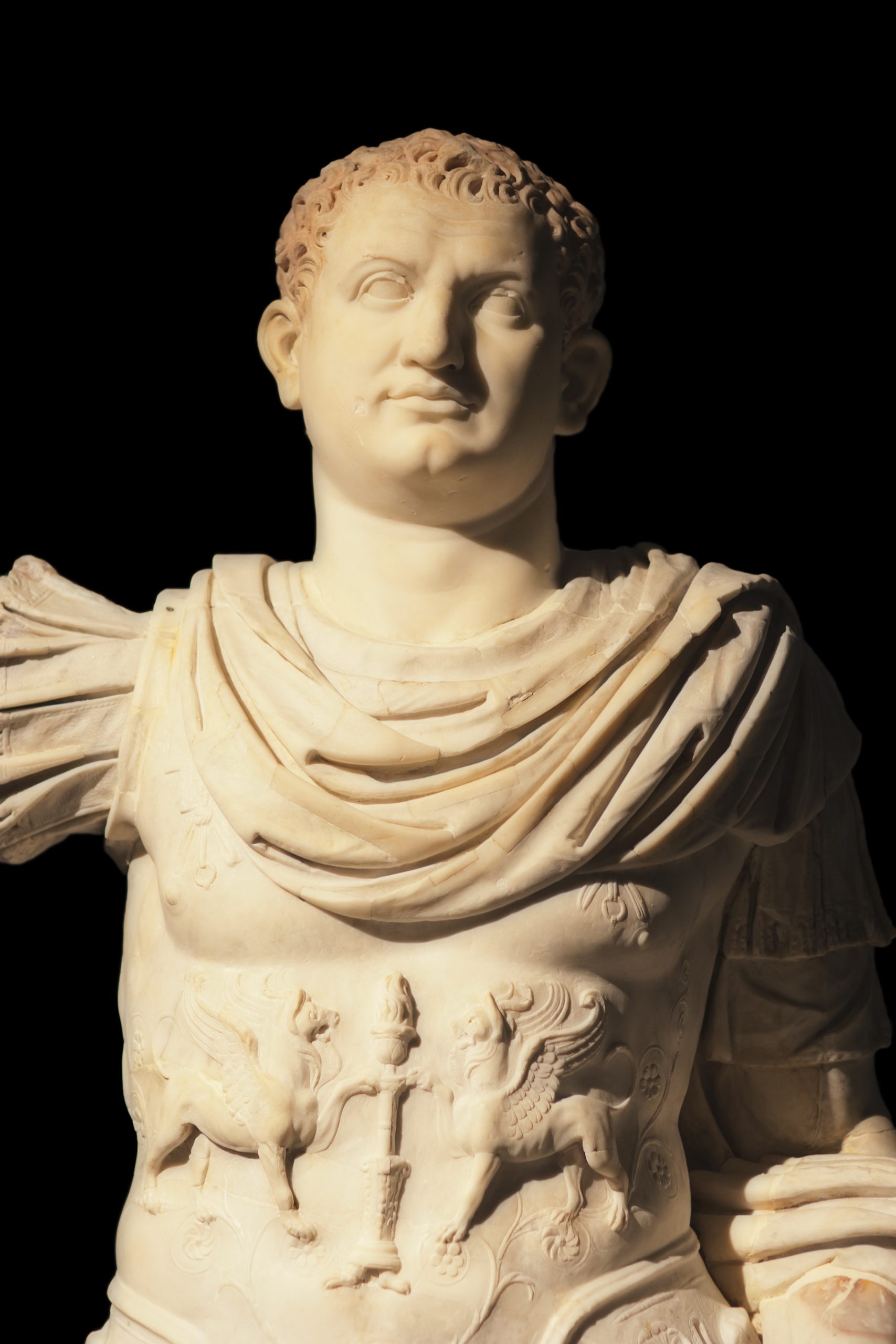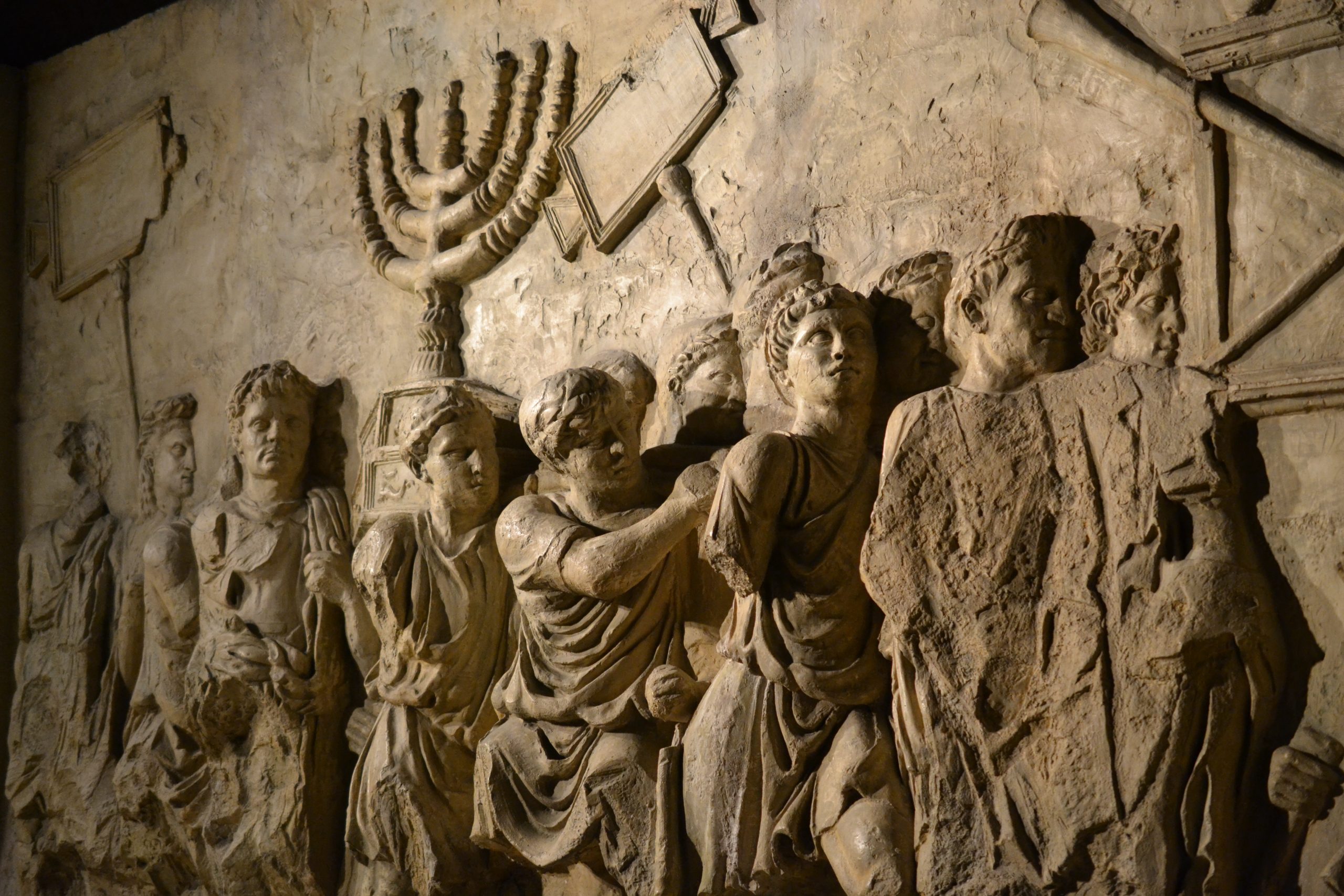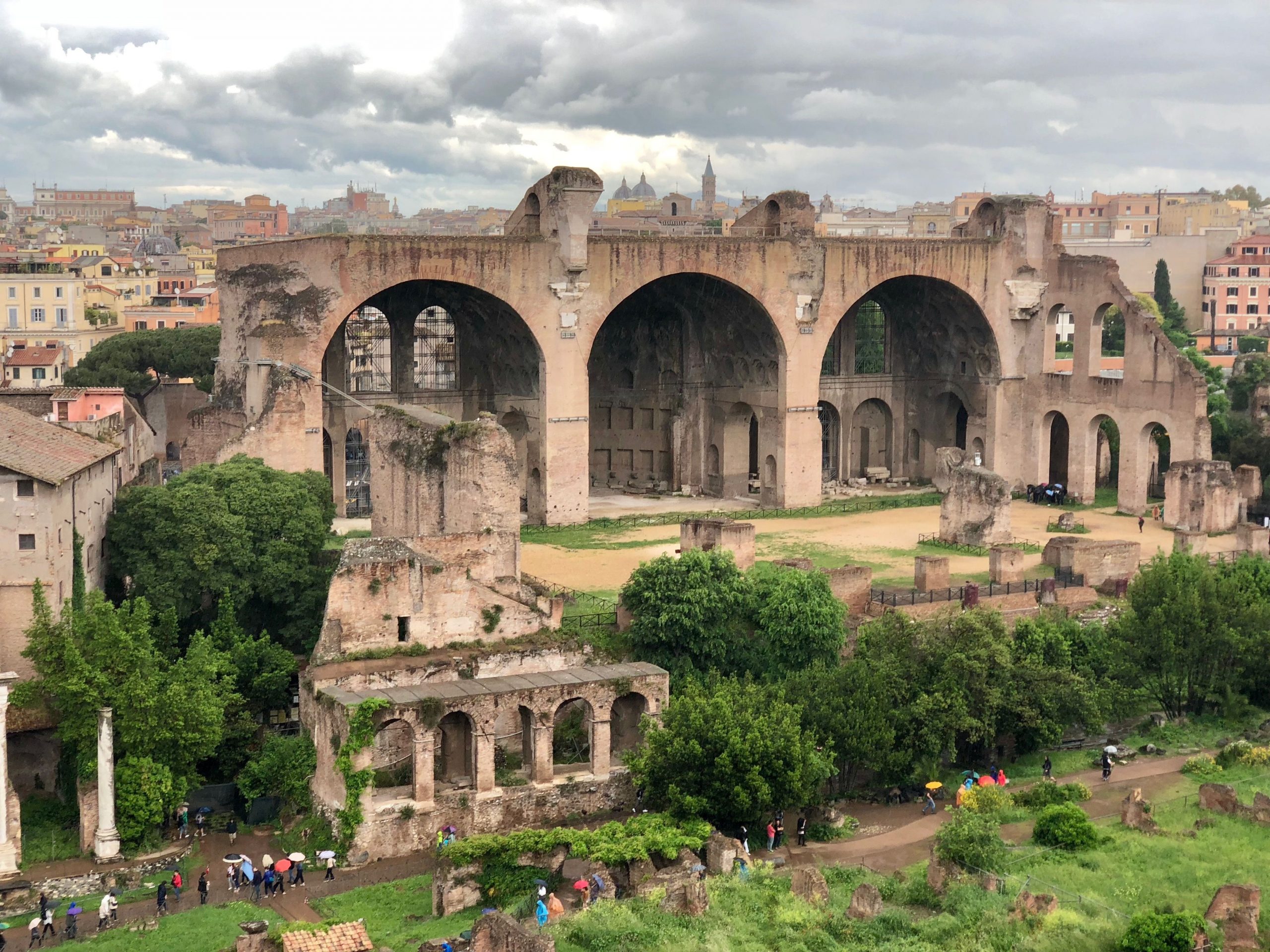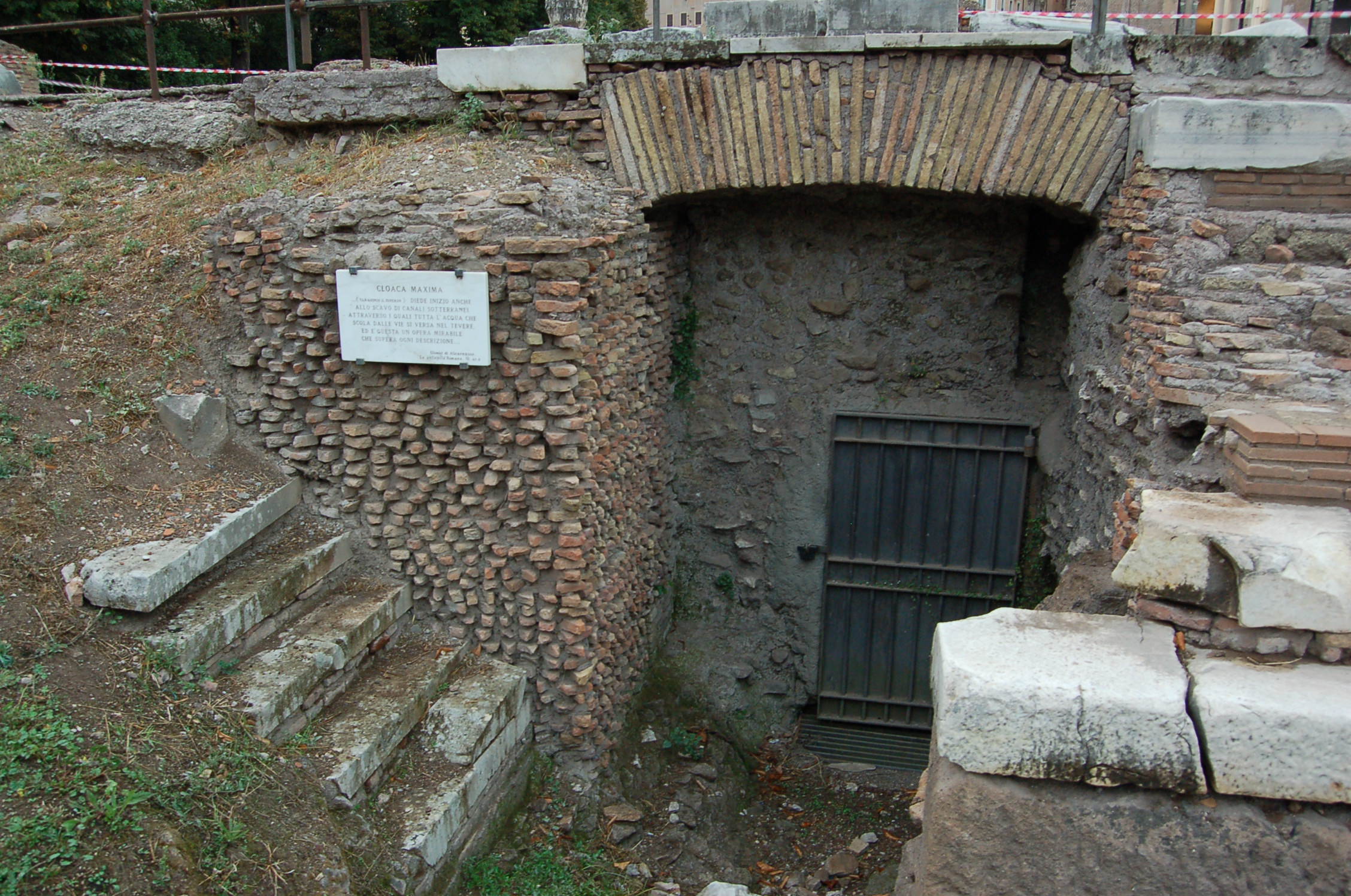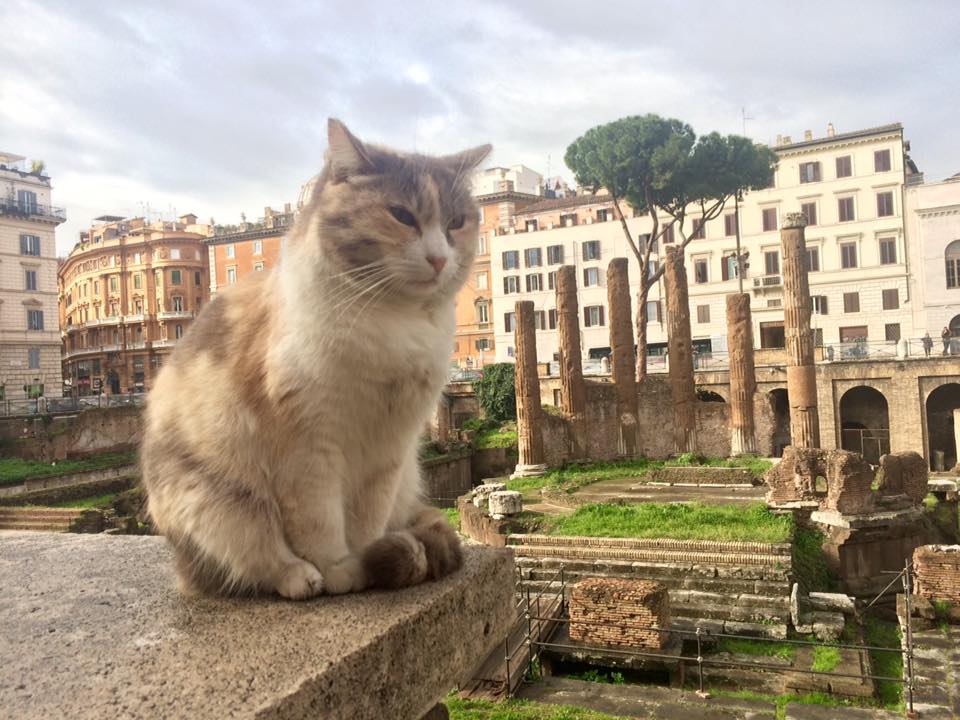THE ROMAN TRIUMPH
The Ancient Romans celebrated military victory by holding a triumphus – a parade into the city. The Roman triumph was a civil ceremony and religious rite dating back to Romulus that publicly celebrated and sanctified the success of a military commander who had successfully completed a foreign war. The triumphal parade took the Via Triumphalis from the Circus Maximus and turned left into the Forum and became the Via Sacra. From here the parade entered the forum and continued to the Capitoline Hill where sacrifices were given to the Gods in thanks for the victory. Huge Triumphal Arches were built later to memorialize these triumphs for generations to come.
On the day of his triumph, the general or emperor wore a crown of laurel and a purple, gold-embroidered triumphal toga picta (painted toga) that identified him as near-divine or near-kingly, he was even known to paint his face red with cinnabar (mineral pigment) to resemble Jupiter. He rode in a four-horse chariot with the goddess victory (a slave dressed with wings) through the streets of Rome in a procession with his army (unarmed), captives, and the spoils of his war.
The triumphal parade was a public affair, the whole city gathered to see the victorious emperor and his spoils enter the city. These parades could last for days with gifts, money and food being given out to the crowd. A long train of carriages snaked through the forum displaying the spoils of war – gold, silver and precious objects – statues as well as animals and sometimes even trees taken from foreign lands. The prisoners of war followed in chains, trudged through the forum for all to see, they would soon be on sale at the slave market.
Titus was the son of the Roman emperor Vespasian and they, along with Titus’ brother Domitian, made up the Flavian Dynasty. Vespasian and Titus were sent to Judea by Nero where they succeeded in quelling a revolt in 70 AD. The celebratory triumph held on their return to Rome was like nothing Rome had seen – resplendent with spoils from Judea including furniture and trappings from the Temple of Herod – the most sacred temple of the Jews, destroyed by Titus’ troops. This parade and the spoils can be seen on the reliefs on the inside of the Arch of Titus.
The arch commemorating the victory was erected later by Domitian in 81 AD, he ordered the construction of a triumphal arch to commemorate the victory of his brother and father.
The arch was strategically placed at the summit of the Via Sacra where the triumphal procession entered the forum, and in full view of the Colosseum – the monument constructed by the Flavians with the gold and silver brought back from the war. The Arch of Titus bears an inscription in its upper portion: ‘The Senate and People of Rome / To the Deified Titus Vespasian Augustus / Son of the Deified Vespasian’.
This public dedication was a clever way to cement the Flavian Dynasty – relative newcomers to Roman politics – into the anals of history.
The arch has a single passageway and is decorated with reliefs depicting the triumph of Titus and Vespasian over Judea. One side depicts the parade coming through a triumphal arch into the city with the spoils, including silver and gold tables and sacred trumpets; but the most striking image is of the sacred candelabra of the Jewish people – the Menorah (seven-armed candelabra) of solid gold which was over seven foot high. Opposite this, Titus is depicted with Victoria (goddess of Victory) in a four-horse chariot, surrounded by the senate represented by a man in a toga, and ‘the people’ represented by a man with a bare chest.
Neither Vespasian nor Titus ever saw the arch, both were already dead by the time of its construction. In the underside of the arch, Titus can be seen flying on the back of an eagle towards the heavens, this is his apotheosis – the moment he becomes a god.
The Arch of Titus still stands today at the highest point of the Via Sacra. Despite being incorporated into the wall of the Frangipani family in the eleventh century, the badly damaged arch was saved by an architect called Valadier in 1821. Valadier’s restoration was incredibly forward thinking, he took the marble pieces that remained and placed them inside a reconstructed arch of travertine. This careful reconstruction allows visitors to distinguish the original, marble, decoration and the modern travertine.
